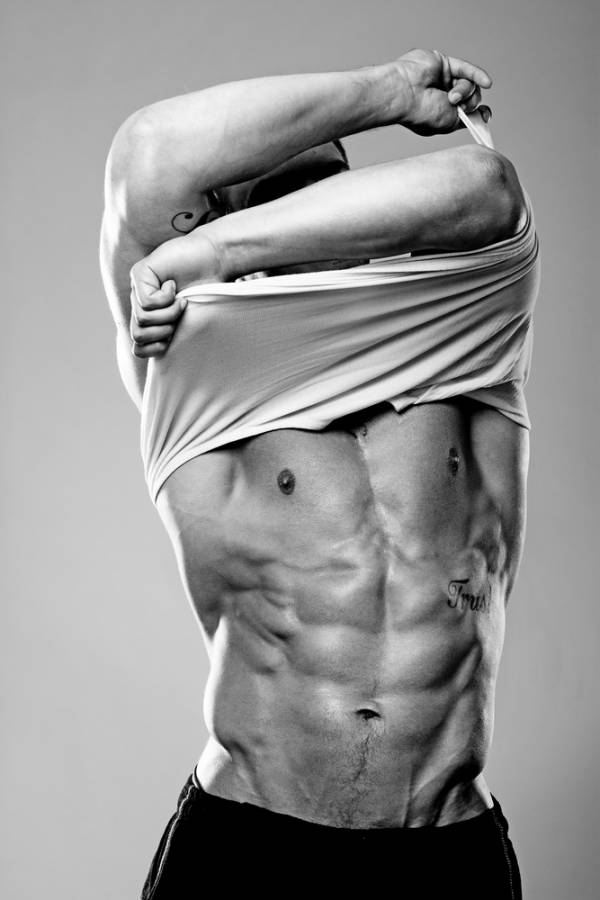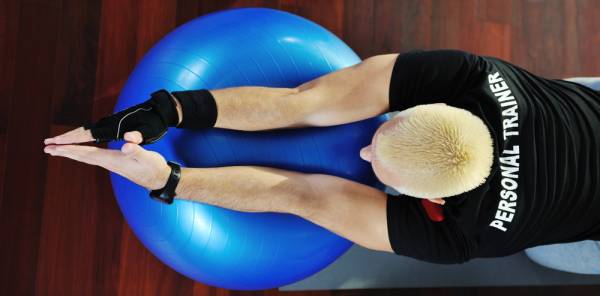I have had this article on the backburner for a while. Ironically, one of the best writers on Breaking Muscle, Andrew Read, put an article out recently that included one of the points I want to address – the Principle of Specificity. I want to piggy-back off his enlightening piece and add other reality-based points.
It seems today well-intended people are going down the wrong path to achieve their goals. They fall prey to exceptional marketing techniques that have a proven science base that could be written on an atom. Let me explain with some typical examples:
- A dude wants to “get big.” He purchases the latest issue of Pump Illustrated and follows the two-hour, five days per week routine replete with a gazillion sets and exercises.
- A dudette wants to lose her “muffin top.” She opts to purchase a “three easy payments” program/device advertised on an infomercial at 4:00 a.m.
- A tennis dude wants to increase his footwork and quickness. He busts out the agility ladder and performs a menu of drills hoping it will transfer to the tennis court.
- A high school soccer dudette wants to improve her “core” strength and balance to hopefully improve her play on the field. She is all over an exercise she saw a world-class soccer player performing: standing on a BOSU ball while doing torso twists against a resistance band.
- A dude and a dudette want to get “ripped.” They proceed to empty their piggy banks to purchase the latest program that will “incinerate” fat, “sculpt” muscle, and render them the next badass walking around in swimwear.
I think you know where I am going with this. You’d think that after years of seeing products, programs, and ideas come and go because they were eventually proven ineffective, we would have woken up and smelled the Maxwell House coffee. But many remain either completely gullible or outright stupid.
We have all heard this: “If it seems too good to be true, it probably is.” Let me add to that this: “If it is not physically taxing, doesn’t require some discipline, attempts to mimic a sport-skill, and/or is promoted by a fitness model, it is most likely a waste of your time (and money).”
The following list covers 99% of most common fitness and/or sport goals sought by the masses:
- Lose fat.
- Build muscle.
- Get stronger.
- Improve endurance/conditioning.
- Improve athletic skills.
- Improve joint flexibility.
- I will even throw in “tone,” “sculpt,” and “firm up” so we can put those ridiculous terms to bed.
Before I address these common goals, let’s take a refresher course in reality.
Issue #1: Body Type
Maybe you’re tall, have wide shoulders, long arms, a short torso, and long legs. Maybe you’re short, have wide shoulders, narrow hips, short arms, long torso, and short legs. You might have proportionate everything with the exception of long legs or wide hips.
You might be the lucky one and have a narrow waist, wide shoulders, and a proportionate, rock-hard booty. The point is, you are stuck with the body type you were born with. Yes, some are blessed and some cursed, but that is the truth. The real “ideal” body type is up to you.

Whatever you possess, the only realistic alterations you can make are these:
- The amount of fat you possess.
- Your muscle size and strength.
- Your cardiovascular ability.
- To an extent, your joint flexibility.
Issue #2: Discipline
A simple solution to an improved physique: shore up your dietary intake and become more active. Unfortunately, we live in a country where there is an abundance of these:
- Potent, non-nutritious food.
- Technology that limits our need to get up and move (computers, cell phones, elevators, escalators, Walmart scooters).
- Declining self-discipline.
Do you want it or not? If you do, you will do everything possible to get to your goal(s). If not, well, do the math (many people from coast to coast are doing math right now).
Okay, now on to addressing common goals.
Common Goal #1: Lose Fat
Do this: Eat better. Stabilize blood sugar levels, cut out lousy carbs, reduce your caloric intake, and build some metabolically-expensive muscle tissue.
Oh, and one more thing: GET OFF YOUR ASS AND MOVE.
Common Goal #2: Build Muscle & Get Stronger
Do this: Resistance train hard and progressively. Hit it hard, document it, and do more the next session. Rest hard and eat properly to allow growth and strength to occur. You don’t need two-hour, high-volume sessions.
Common Goal #3: Improve Endurance
Do this: perform high intensity intervals, do 20-30 minute high-level continuous training, use a rower, stepper or other device, do boot camp-type workouts or body weight circuits.
Whatever you do, push yourself, get your heart rate up, and tolerate the temporary discomfort you will experience. Don’t be soft.
Common Goal #4: Improve Athletic Skills
Here’s a novel concept: PRACTICE YOUR SPORT SKILLS. Want to be a better baseball pitcher? Then pitch. Soccer goalkeeper? Get your butt in front of the goal and practice stopping the ball, thousands of times. Basketball? Shoot, dribble, and pass against live opponents as much as you can.

Tons of research on the Principle of Specificity (Here are four examples: 1, 2, 3, 4) clearly shows only exactness in the practice of specific skill execution – not almost, nearly, nor close – improves the skill.
You cannot improve a specific skill or movement by throwing medicine balls, wearing a weighted vest, mimicking a skill against a resistance band, or performing martial arts (unless you are attempting to improve your skills in martial arts).
You can use some of these drills/methods to enhance your conditioning/endurance provided you create fatigue, but you are wasting your time if attempting to enhance specific skills.
Sorry to disappoint you, but if you believe to the contrary, you have been hoodwinked. Look beyond the hype and false advertising, examine the research, and get a grip.
Common Goal #5: Increase Flexibility
Do this: Understand your genetic endowment limits your potential regarding joint flexibility. Your skeletal structure – including the bone, ligament, and tendon infrastructure – dictates your potential range of motion at each joint.
So, to maximize your potential, perform static stretches and PNF stretches within reason.
Common Goal #6: Tone, Sculpt, or Firm Up
Do this: You cannot flex, sculpt, or firm up fat. You can build muscle and lose fat. Toning is a matter of losing fat and building muscle. Sculpting is an embarrassing term. What are you, a clay artist?
Your muscle belly size is a genetic issue. Long muscle bellies or short muscle bellies – you can only do so much. Firming up is analogous to toning. You can only “firm” muscle by strength training and losing body fat. Build or maintain muscle, lose fat, and let the firming begin.
References:
1. Rushall, B.S., Pyke, F.S. (1991). Training for sports and fitness. Melbourne, Australia: Macmillan of Australia.
2. Schmidt, Richard A. (1991). Motor Learning and Performance: From Principles to Practice, pg 222, Human Kinetics.
3. Sage,G.W. (1971). An Introduction to Motor-Behavior: A Neuropsychological Approach. Addison-Wesley, Philippines.
4. DeBoer, R.W., Ettema, G.J., Faessen, B.G., Krekels, H., Hollander, A.P., De Groot, G., & Van Ingen Schenau, G.I. (1987). Specific characteristics of speed skating: implications for summer training. Medicine and Science in Sports and Exercise, 19, 504-510.
Photos courtesy of Shutterstock.






